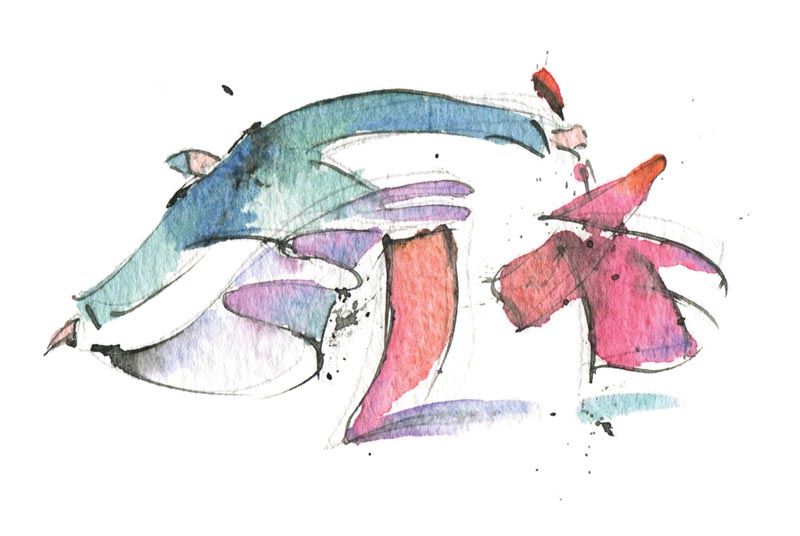
Bruce Stock, a retired major who served with the Princess Patricia’s Canadian Light Infantry (PPCLI) and now lives in London, Ont., shared a tale about a flag mishap. In April 1967 on the 50th anniversary of the Battle of Vimy Ridge, former Ontario premier Leslie Frost went to Vimy to present the town with the new Canadian Maple Leaf flag.
He was escorted by a 50-man guard of honour from 2 PPCLI, a colour party and a band from the ordnance corps. He was introduced to an interested crowd and, holding a very large folded nylon flag in his arms, he walked to the microphone. Frost warmly praised the two countries’ bond of mutual sacrifice and expressed his pride in presenting Vimy with the new national standard, during Canada’s centennial year. He gestured frequently as he spoke, while, unbeknownst to him, the slippery red and white nylon started to unfurl.
This happened directly in front of the honour guard and Stock’s alarm grew as the flag became a wiggly, squiggly, pile of static-charged laundry, which clearly resented being folded. The premier tried to tame the unruly banner, grabbing edges and pulling them back atop the slowly sliding pile. He then presented what looked like an armload of red and white laundry to the mayor of Vimy. That dignitary, somewhat shorter than the premier, found himself wrestling a slippery expanse of flag.
The honour of raising the flag had been given to an even-shorter gendarme who strode up and disappeared into the billowing cloud of nylon. He finally bundled it together and headed up to a second floor city hall balcony, which had no flagpole.
“I instinctively tensed as I wondered how the flag would be raised,” Stock recalled. “He quickly walked to one end of the balcony and started to tie an end of the flag to the rail. “‘Duh,’ I thought, it won’t be raised at all, he’ll simply hang it from the balcony!”
As Stock watched, the officer tied off the banner and flipped it over the rail. Upside down.
Stock thought hard. “I started lifting my head up and down, suggesting ‘Look up’ in the hope that they would wonder what I was doing and start looking around.”
One dignitary finally figured out what was happening. “Pandemonium ensued, as people looked for the mayor, who looked for the gendarme, who scurried back up to the balcony.”
“After the flag was righted, we finally performed present arms as the colour party lowered its flags. And the band played the most stress-relieving and sweetest version of O Canada we had ever heard.”
A Saskatchewan boy who, in his telling “had never even been in a rowboat,” joined the Royal Canadian Navy in 1940. After his basic training he found himself aboard a corvette. On his first day, he was terribly sick.
“I asked this other guy if it always got this rough.”
That drew a laugh.
“We were still tied up to the dock.”
Another corvette veteran remembers the tossing and turning of the little anti-submarine vessels. “We used to say we had six square meals a day. Three going down and three coming up.”
The flag became a wiggly, squiggly, pile of static-charged laundry.
A fellow who served in an infantry regiment in northwestern Europe remembers a day in the Netherlands when his unit was holding a house and facing a German line across a canal. A senior officer appeared unexpectedly and asked to be allowed to fire a machine gun, saying he had never done so. He was waved into place and directed toward a distant German position. He fired a burst and missed. Fired again and missed. A hole appeared in the plaster wall above his head.
“What hell was that?” he asked.
A private looked at him. “They are allowed to shoot back, sir.”
A Canadian who was a prisoner of war recalls being freed in the spring of 1945 as the Second World War wound down in Germany. One morning, the camp guards were simply gone. The PoWs cautiously began exploring the surrounding countryside. They came across an American unit moving east, which promptly arranged for their repatriation.
“The next day, I was in England. If we had been found by the British, I would probably still be there filling out paperwork.”
A Second World War veteran who was a sergeant in an armoured regiment shared a story about a wrong-headed officer who took him from command of a tank and sent him to a recce platoon. He figured orders were orders and pushed forward seeking the enemy. Soon, he and his comrades heard Germans moving toward them. They radioed in the news and were told to fall back quickly because of an incoming artillery strike.
The next morning, they went forward to assess the effectiveness of the barrage and found 14 dead cows. The sergeant was promptly returned to his tank. An observation from the ranks: the most dangerous man in the army is a lieutenant with a map.
Advertisement





















